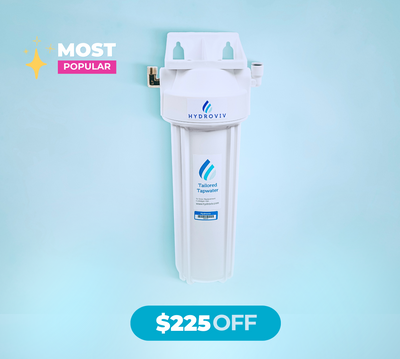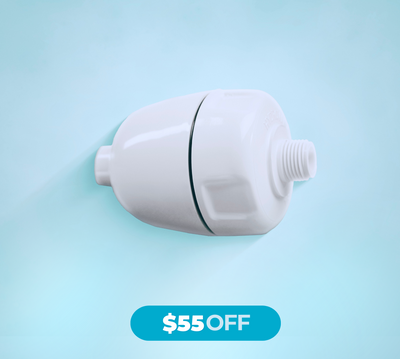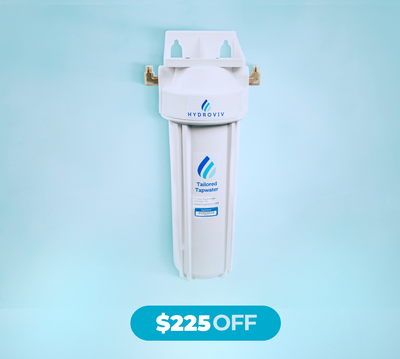Problems We Found In Los Angeles Water
RSSAnalies Dyjak, M.A. | Research Analyst
**Updated July 7, 2022 to include current available data
For Hydroviv’s assessment of Los Angeles tap water, we aggregated water quality test data from LADWP, the U.S. Environmental Protection Agency (EPA), as well as from samples that we collect and analyze. We cross reference these data with toxicity studies in the scientific and medical literature, and look at upcoming regulatory changes. The custom water filters that we offer in Los Angeles are optimized with this research in mind.
Source Of Los Angeles Drinking Water
Los Angeles receives water from several sources. In 2021, the Los Angeles Aqueduct (LAA) supplied 12 percent of the water that was treated at the Los Angeles Aqueduct Filtration Plant. Purchased imported water from the Metropolitan Water District of Southern California (MWD), sourced from the State Water Project and Colorado River Aqueduct amounted to 73 percent. The remaining water supply was sourced from local groundwater at 12 percent and recycled water at 3 percent.
High Levels Of Lead In Los Angeles Drinking Water
Lead enters Los Angeles' drinking and tap water through older lead service pipes and lead-containing plumbing. When corrosion control measures put in place by the municipality fail (like what recently happened in Flint, Michigan), lead leaches into the drinking water, and can reach dangerous levels. Currently,10% of LA water quality samples analyzed for lead are over 5 parts per billion. While in compliance with very loose federal regulations, EPA, CDC and American Academy Of Pediatrics all acknowledge that there is no safe level of lead for children.
High Levels Of Chromium 6 In Los Angeles Drinking Water
Chromium 6 is a highly toxic metal that is not regulated by the EPA. According to the most recent report, maximum Chromium 6 levels in Los Angeles drinking water were reported at 2.8 parts per billion. For the sake of perspective, Chromium 6 levels in LA's water quality are 140 times higher than the 0.02 parts per billion concentration determined to have negligible impact on cancer risk.
PFAS in Los Angeles Drinking Water
Per and Polyfluoroalkyl Substances (PFAS) are a category of emerging contaminants commonly used in firefighting foam, Teflon, non-stick surfaces, stain-resistant surfaces, and food packaging. The Agency for Toxic Substances and Disease Registry (ATSDR) has determined that PFAS exposure is associated with various adverse health effects, including an increased risk of cancer, lowered fertility rates, and developmental issues in infants and young children.
PFAS were detected at locations in and around Los Angeles, including several municipal water companies, the Airport Industrial Park in Los Angeles, and the Joint Forces Training Base in Los Alamitos. Total PFAS levels ranged from these locations ranged from 56 ppt to 933 ppt. Not all water filters are designed to remove PFAS from tap water. If you'd like to find water filters that remove PFAS from tap water, check out this Duke/NC State PFAS study. Hydroviv filters are NSF/ANSI Standard 53 certified for PFOA/PFOS removal.
Disinfection Byproducts (DBPs) In Los Angeles’ Drinking Water
DBPs are a category of emerging contaminants that form when chlorine-based disinfectants react with naturally-occurring organic matter. EPA regulates two categories of DBPs: Total Trihalomethanes (TTHMs) and Haloacetic Acids (HAA5). The EPA has stated that DBPs have been associated with increased risk of bladder cancer as well as kidney, liver, and central nervous system problems. In 2021, Haloacetic Acid levels in Los Angeles were as high as 13 parts per billion, compared to the EPA Maximum Contaminant Level (MCL) of 60 parts per billion, while Total Trihalomethane levels were as high as 48 parts per billion, compared to the EPA MCL of 80 parts per billion.
Arsenic In Los Angeles Drinking Water
Arsenic is a naturally occurring hazardous heavy metal that can cause cancer and other health problems. 2021 Arsenic levels were reported to be as high as 2 ppb. While Los Angeles' Arsenic levels were not in violation of EPA water quality standards, consumers should know that the U.S. EPA's standard balances toxicity against the costs of removing arsenic from drinking water. We strongly suggest that tap water with levels higher than 1 part per billion be treated to remove arsenic, especially in homes with children.
Still Have Questions About Los Angeles Tap Water?
Hydroviv is a water filtration company that uses water quality data to optimize water filters for each customer's water. The contaminants that we list above are what we consider to be major “points of emphasis” that we use to build water filters that are built specifically for Los Angeles, but our filters provide broad protection against a wide range of contaminants.
If you’re interested in learning more about water filters that have been optimized for LA tap water, or just have questions about water quality in general, feel free to visit www.hydroviv.com, reach out by email (hello@hydroviv.com) or through our live chat. We also frequently post water-related news on Twitter or Facebook. We pride ourselves in being a reputable source of information on water quality, and your questions will be answered by scientists, not salespeople (we don't have any salespeople).
Please Share This Los Angeles Water Quality Article On Social Media With Anyone You Think Would Benefit From The Information!
Recommended Articles For You
What Do I Need To Know About Arsenic In My Drinking Water?How Do I Remove Chromium 6 Contamination From My Drinking Water?
Disinfection Byproducts In Your Drinking Water


